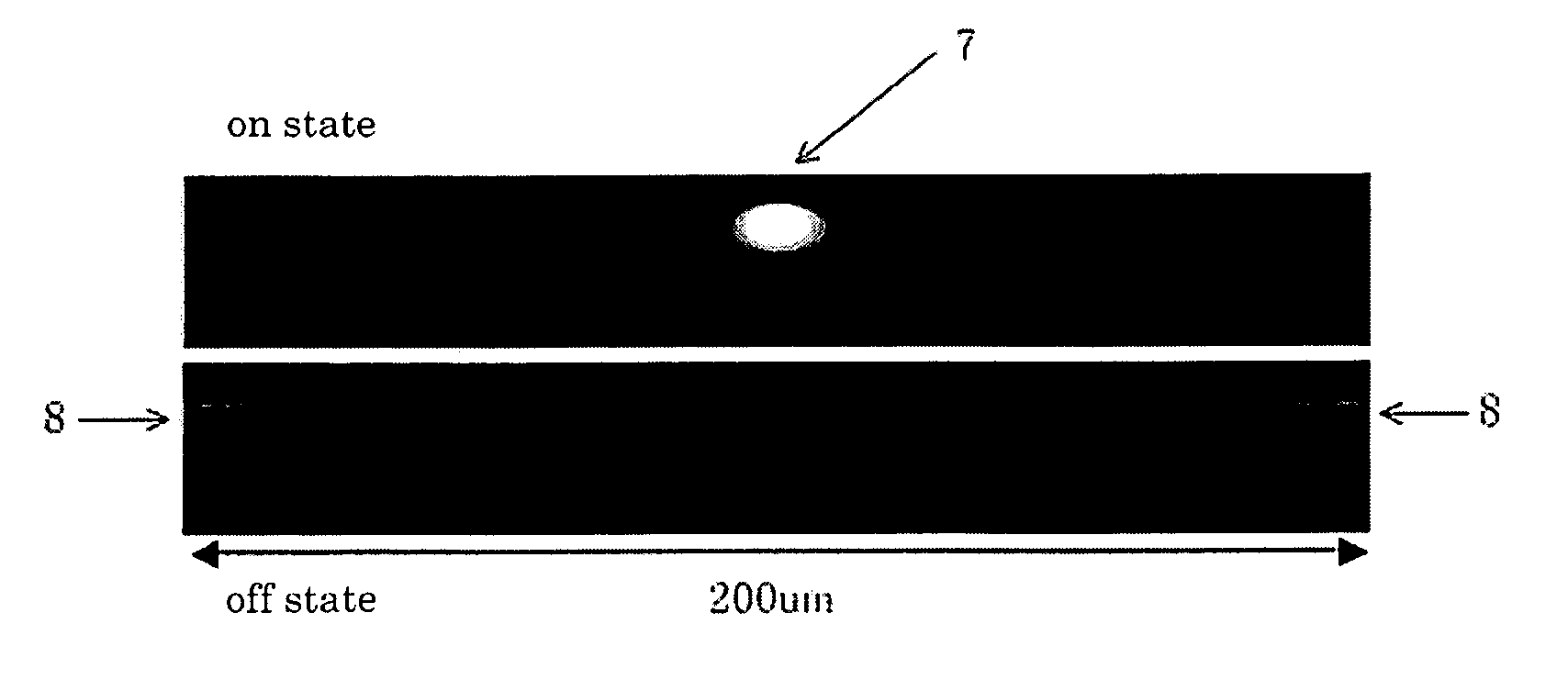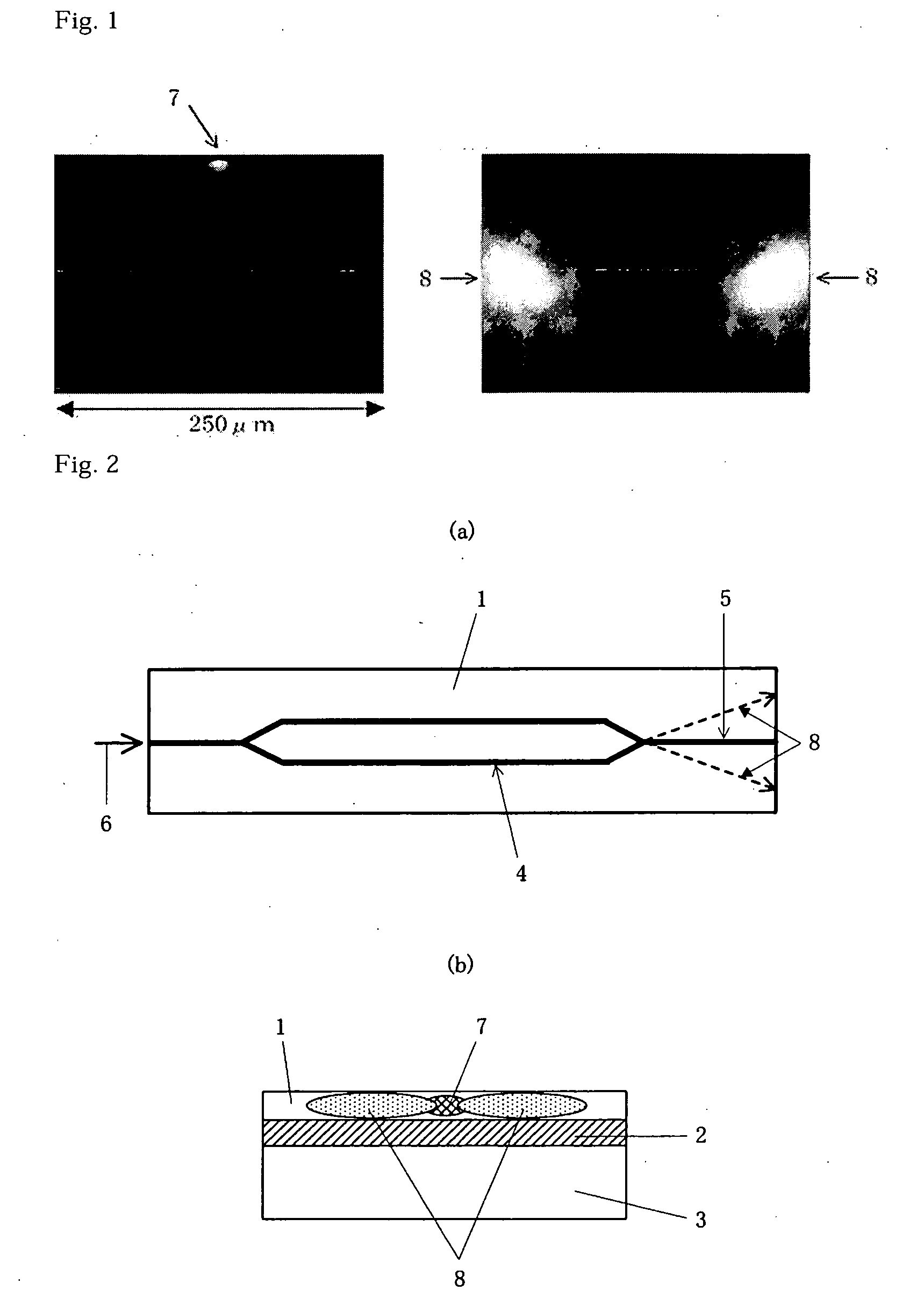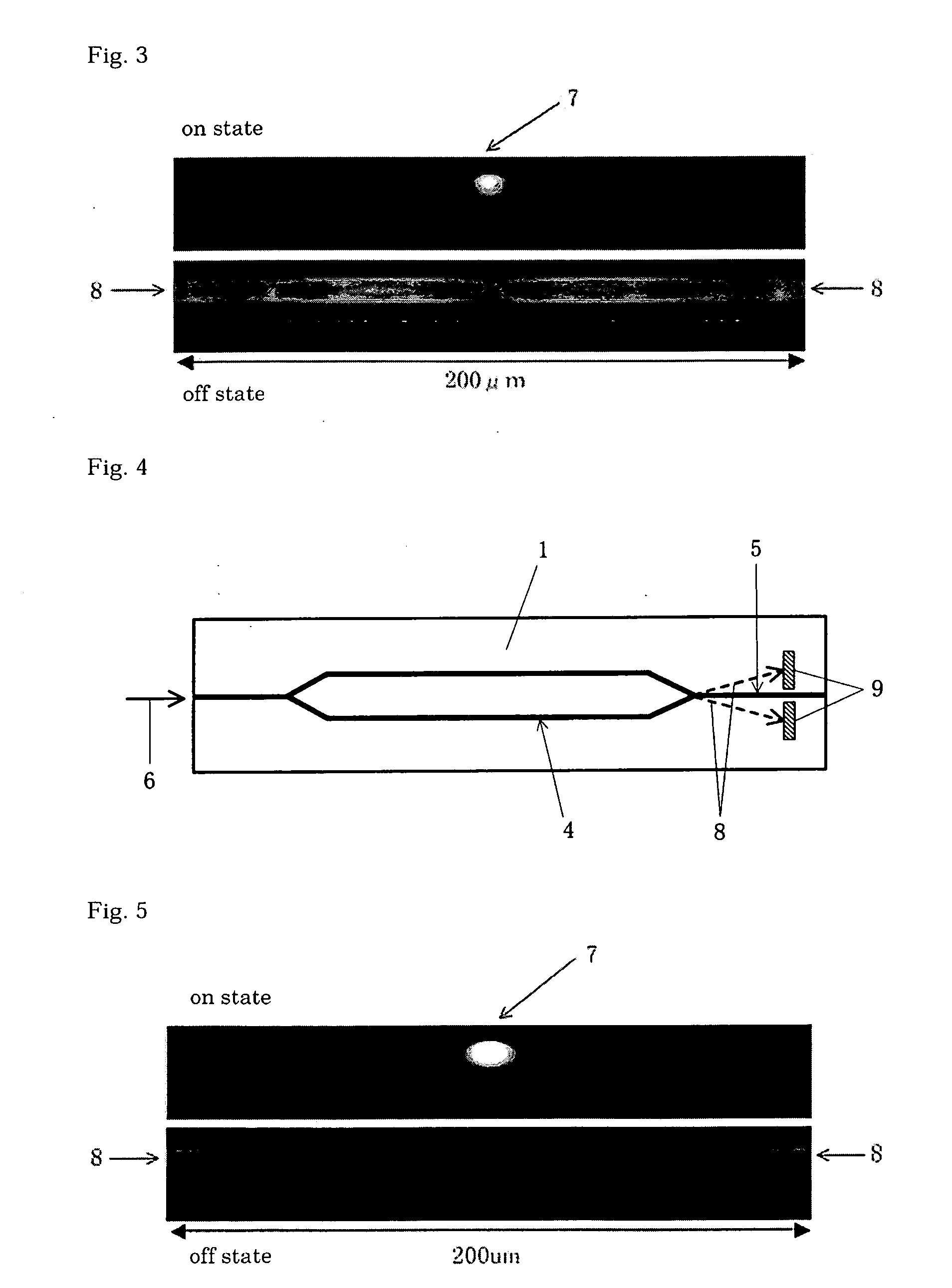Optical modulator
- Summary
- Abstract
- Description
- Claims
- Application Information
AI Technical Summary
Benefits of technology
Problems solved by technology
Method used
Image
Examples
example 1
[0103] In an optical modulation element of a thin plate, an X-cut type LN substrate having a thickness of 500 μm was used as a substrate and an optical waveguide was formed in the top surface of the substrate by a Ti diffusing process. The optical waveguide is a Mach-Zehnder type optical waveguide as shown in FIG. 4 and the distance from an optical junction portion to the end portion of the substrate is 3500 μm. The bottom surface of the substrate was polished by a polishing machine until the thickness of the substrate becomes 10 μm, and was then attached to a reinforcement plate using an UV-curing adhesive as an adhesive layer. Next, a modulation electrode was formed by a plating process, a through-hole having a depth of 10 μm was formed in the way from the optical junction portion to the output end portion by a laser cutter as a shielding means and Al was attached to the concave portion. Thereafter, the substrate was cut to have a predetermined size, thereby manufacturing the thin...
example 2
[0104] In an optical modulation element of a thin plate, an X-cut type LN substrate having a thickness of 500 μm was used as a substrate, an optical waveguide was formed in the top surface of the substrate by a Ti diffusing process, and high refractive index regions (Ti diffusion, a shortest distance from the central portion of the output waveguide to the high refractive index region: 15 μm) were formed in the both sides of the output waveguide. The optical waveguide is a Mach-Zehnder type optical waveguide as shown in FIG. 6 and the distance from an optical junction portion to the end portion of the substrate is 3500 μm. The bottom surface of the substrate was polished by a polishing machine until the thickness of the substrate becomes 10 μm, and was then attached to a reinforcement plate using an UV-curing adhesive as an adhesive layer. Next, a modulation electrode was formed by a plating process and the substrate was cut to have a predetermined size, thereby manufacturing the thi...
example 3
[0105] In an optical modulation element of a thin plate, an X-cut type LN substrate having a thickness of 500 μm was used as a substrate and an optical waveguide was formed in the top surface of the substrate by a Ti diffusing process. The optical waveguide is a Mach-Zehnder type optical waveguide as shown in FIG. 8 and the distance from an optical junction portion to the end portion of the substrate is 3500 μm. The bottom surface of the substrate was polished by a polishing machine until the thickness of the substrate becomes 10 μm, and was then attached to a reinforcement plate using an UV-curing adhesive as an adhesive layer. Light absorbing regions (material: Al, a shortest distance from the central portion of the output waveguide to the light absorbing region: 15 μm) were formed in the both sides of the output waveguide. Next, a modulation electrode was formed by a plating process and the substrate was cut to have a predetermined size, thereby manufacturing the thin plate havin...
PUM
 Login to View More
Login to View More Abstract
Description
Claims
Application Information
 Login to View More
Login to View More - R&D
- Intellectual Property
- Life Sciences
- Materials
- Tech Scout
- Unparalleled Data Quality
- Higher Quality Content
- 60% Fewer Hallucinations
Browse by: Latest US Patents, China's latest patents, Technical Efficacy Thesaurus, Application Domain, Technology Topic, Popular Technical Reports.
© 2025 PatSnap. All rights reserved.Legal|Privacy policy|Modern Slavery Act Transparency Statement|Sitemap|About US| Contact US: help@patsnap.com



